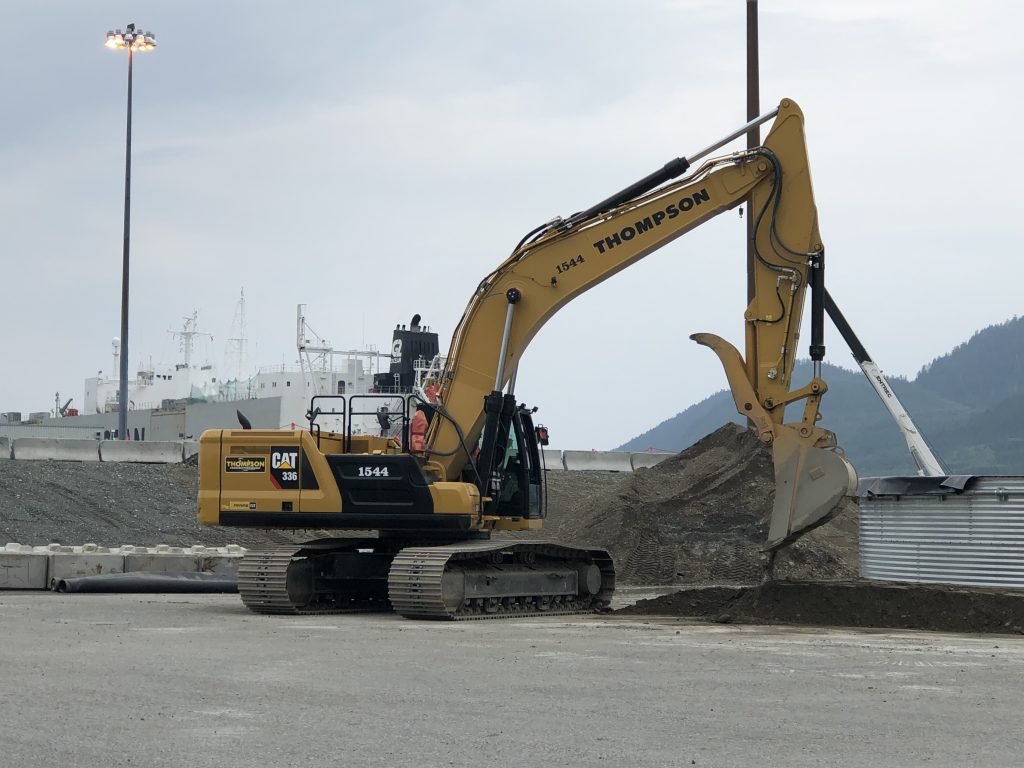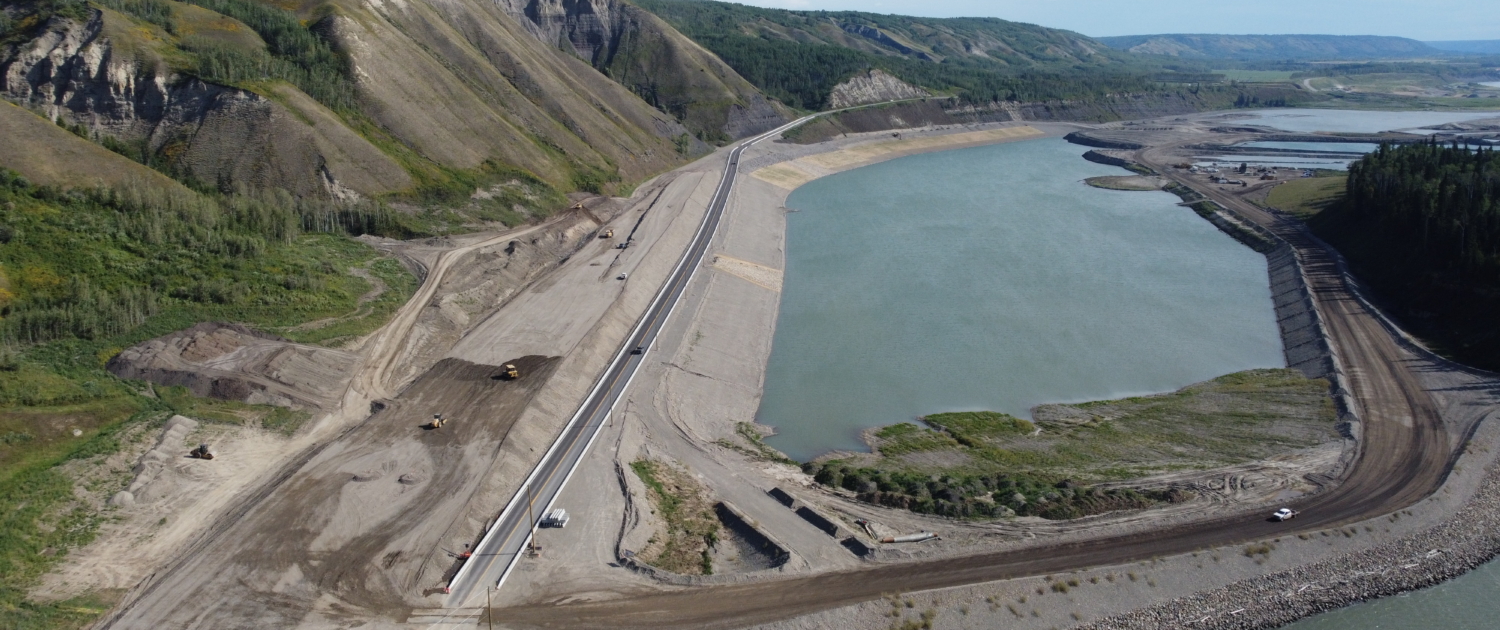Planning
The construction of the 7.8km of new two-lane highway 29 construction includes for phased construction requiring a 1km detour to be constructed and operated for 13 months including single lane alternating traffic (SLAT) with micro staging of traffic to accommodate the construction. The elimination of the detour is in conjunction with the paving of the new two-lane highway and completion of the 152m two pier, three span steel girder bridge construction over the Lynx Creek.
This will then allow for the demolition of the existing Lynx Creek Bridge, Asphalt milling of the existing highway and completion of approx. 1km of high slope embankment in addition to the final stages of multiple large, designated stream culvert installations and associated concrete headwall structures. The highway embankment included for Instream permitted activities and 925,000m3 of excavation of two offshore islands within the Peace River. Frequent river water level fluctuations had to be forecasted for safe, efficient extraction from these sources.
Methods and Characteristics
Seven gravel extraction areas were available to the contractor for project execution. Each of the gravel extraction areas were thoroughly studied and investigated to determine which ones are best suited for the in-spec fill materials, Accessibility, haul distances, material size and quality. All was considered in order to determine the best use of company resources, while providing quality product at competitive rates and accelerated schedule. Settlement monitoring in strategic high fill placement such as the bridge causeway over a flood plain and under large in fill culverts ensured consolidated embankment and compaction.
Bridge Construction also had some complex and unusual aspects to the work scope. Due to steep terrain and limited access. Cofferdams were constructed for early crane pad access for instream pier foundation construction. The scope had also included a thermal integrity profiling non-destructive testing on one test pile (TIP Test Pile). This was to confirm that the contractor’s concrete methodology produced production piles of acceptable quality. This would involve employing the services of a specialty subcontractor. Early geotechnical studies and sampling of the underlying bedrock withing the vicinity of the project’s structural components, (e.g pile caps and rock sockets) had determined a rock mass foundation of mainly bedrock that had contained traces of shale stone that can break down overtime when exposed to elements. Thus, all rock sockets within each pile group were to be drilled, cleaned, inspected/approved, reinforced steel installed, and concrete placed within a period of time not exceeding thirty-six (36) hours. Concrete was placed by tremie methods without segregation and in a manner that the reinforced steel had not been dislodged nor damaged.
Construction Rate for Key Activities:
An average of 15,000m3 per shift of roadway excavation and placement has been maintained while producing an additional average of 3500m3 of roadway aggregate to required specifications.
Other Characteristics:
Working within the boundaries, adjacent creeks, and streams of the Peace River comes with a high level of environmental responsibility. Scope specific permits and environmental protection plans (EPPs) shall be in place and followed to reassure protection to all fish habitats, vegetation, ecological communities, wildlife and heritage resources associated with these works.
Some other associated aspects to this project included:
- Construction of a 675m long x 35m high stability berm within the Peace River to protect existing infrastructure from future landslides.
- Construction of Littoral Fish Habitat,
- Boat Launch w/ Associated Facilities
- Excavation and disposal of Potential Acid Generating Materials.
Scope of work
Client:
BC Ministry of Transportation and Infrastructure
Project Location:
5km North East of Hudson’s Hope, British Columbia
Major Quantities:
- 152m Two Pier, Three Span Steel Girder Bridge
- 800,000m3 of Overburden Soil Removed
- 375,000m3 of Roadway Excavation (Type D)
- 1,330,000m3 of Granular Borrow Excavation
- 4,000m3 of Type A Excavation
- 110,000m3 of Rip Rap Class 50kg, 100kg & 250kg
- 140,000m3 of Produced Granular Base Materials
- 28,000 ton of Asphalt Paving
- 1,100m of large CSP Pipe w/ Concrete Headwalls
- 28,000 ton of Asphalt Paving
- 137,000m3 of Organic Stripping












